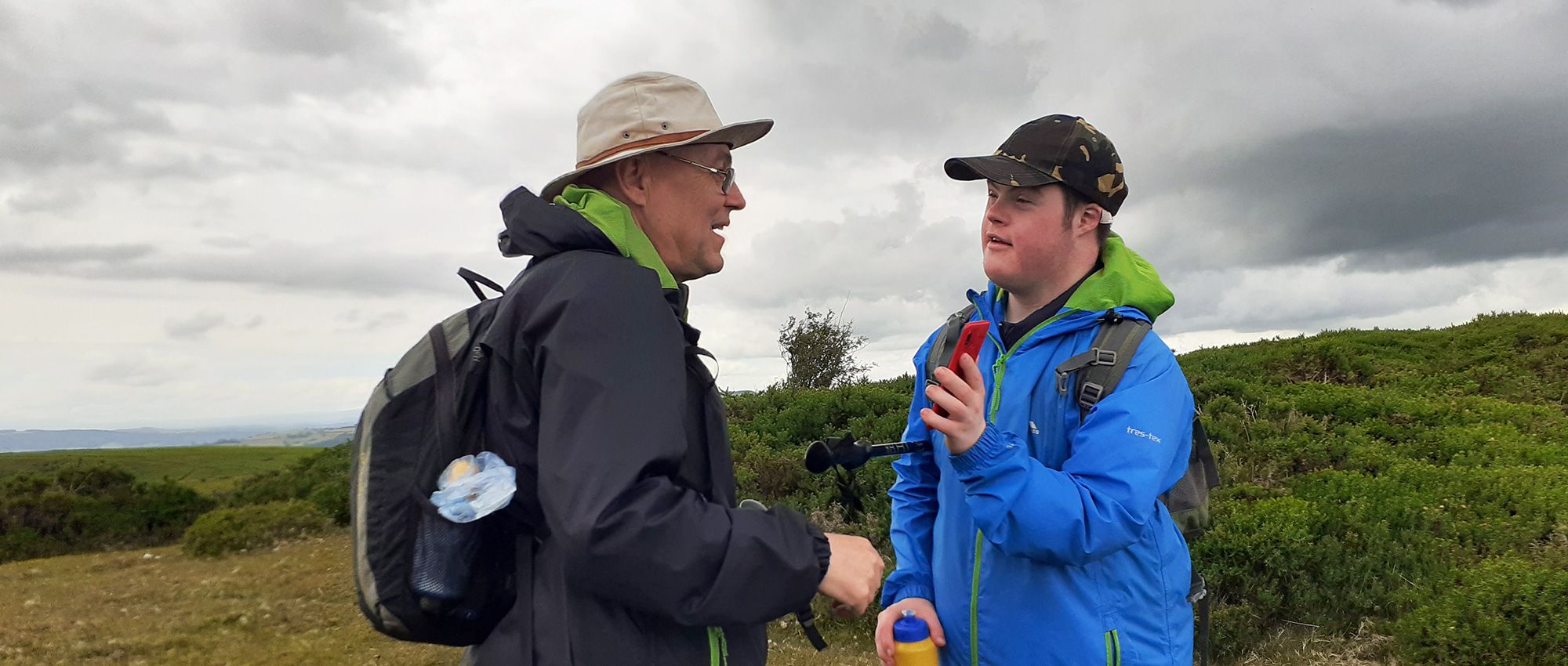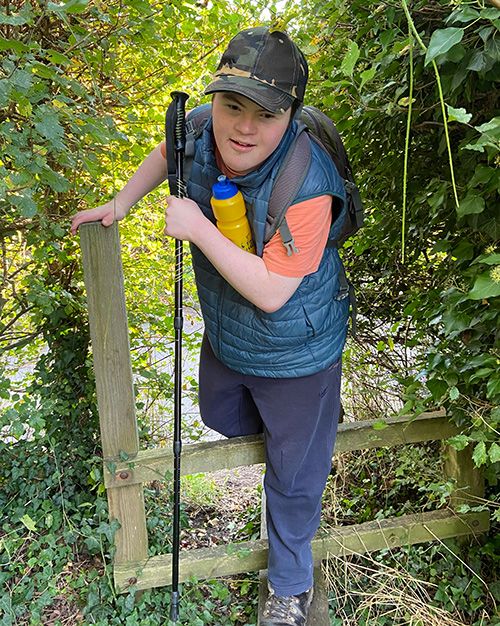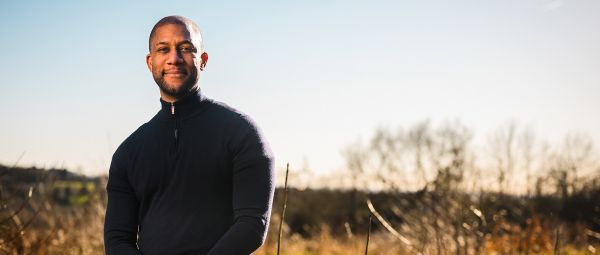Sunday ‘Big Walks’ with my learning disabled son
Ramblers member Alan shares his experiences of walking with his son Eddie who has Downs Syndrome.

We moved to Bracknell from north London and at the time it felt fairly rural in comparison to London. Walking started as a hobby as the children got older. Rather than sit in and fall asleep in front of the Grand Prix, it was a chance to get out and get some fresh air.
As the children got older they didn’t really want to walk anymore but Eddie, who is 24 and has Downs Syndrome, was always willing to go for a walk and gradually those walks got a bit longer. We bought a couple of guidebooks and I joined the Ramblers about 5-6 years ago, to get access to the Ramblers Routes. Over the last 10 years we’ve explored a lot of the counties close by. Sunday is now pretty much given over to the ‘Big Walk’ by Eddie and me. We have a lot of fun together.
A Big Walk is normally 7-10 miles. We are generally out for about 6 hours. We take time to stop for lunch and there’s normally a pub stop. Our walks have got a little bit shorter recently as Eddie has decided to walk a bit slower. He sets the pace and it's very slow. I’ve had to learn how to walk slowly, which isn't easy.
Planning a walk
We sometimes plan the walk on a Saturday night. Eddie is mostly non-verbal and during the week he will appear with various guidebooks as an indication that we need to start planning for the next walk. We do several walks that are near the Thames, one of which starts from Pangbourne where there is a toll bridge. He will sometimes ask if we can head in that direction. Eddie uses a form of Makaton, and so he will sign ‘the bridge’ and ‘paying the toll’ so I know which walk he wants to do.

Benefits of being in nature
My wife and I are Eddie’s carers. His world has become increasingly small in recent years, first with Covid lockdowns, and then with the end of his course at college. My own world can also feel relatively small. Whilst I work for a big company, an awful lot of my role is office-based. Our Sunday walks are important for me to spend time in nature and to get some exercise. But equally we know it benefits Eddie. Like all hobbies, you get immersed which means you aren’t worrying about other things so it’s very good as a de-stresser.
Eddie often doesn’t walk side by side with me. He likes to walk behind. I suspect, though I can’t be certain, that gives him a certain feeling of independence and time in his own space. Eddie is probably at his most animated and ‘talkative’ after the walk. For two days after the walk he’ll be sharing pictures and referring back to things he saw or that happened. And then later in the week he’ll start asking about the next walk. So as a hobby it’s often the centre point of our week.
Collecting photos
Both Eddie and I take photos on our walks. Eddie uses a smart phone and often takes photos at odd angles. He seems fascinated by the bright green of moss covering old trees. Signposts and way markers are another favourite topic. Of course, views, people and animals all feature prominently too. The pictures really come into their own as a way of Eddie sharing the walk with others.
My wife and I discussed that perhaps in the future, Eddie could join the local Ramblers group and go out on some of their midweek walks. One of the challenges for carers and the people they are caring for is that they can have a lot of time during the week with maybe not many activities. Having the opportunity to participate in a group activity, either with or without their carer, has the potential of becoming an enriching experience for all involved.
Inclusive walks
Walking is a great activity for socialising and improving fitness. It would be ideal if Ramblers Groups were fully inclusive and representative of their wider communities. Ramblers volunteers may feel that this could add complication in planning and safety arrangements. Similarly, there may be concerns over communication or behaviour. I'm not sure that's the case, and it's not something that has been a problem in over 10 years in walking with Eddie. But the best way to find out, is to start a discussion. That way groups would be able to find out who might be interested and what their needs might be.

Reaching out within the community
I think this is an opportunity for the Ramblers. People with learning disabilities and their carers could benefit from all the good things that come from being a Rambler. I’d encourage Ramblers groups to reach out within their community. Local social worker teams and Mencap groups often have community noticeboards where offers to participate could be posted. Why not contact them and see what happens?
In the meantime, when I retire in a few years time, I might think about going walking with a Ramblers group but generally for now we are happy enough on our own. But it is nice to be plugged into the Ramblers community via Walk magazine. It’s interesting to see the footpath challenges, access issues as well as the history of the Ramblers.

A bimble around the coast of Britain
Dissatisfied with staring at screens all day, Emma challenged herself to a walk around Britain’s coast. After four-hundred-plus days, she shared her story.

Creating connections through walking
Gordon moved to the Dorset coast and discovered that walking is a great way to meet new friends and connect.

Feeling at home in the countryside
Nick looks back at discovering walking in the countryside, the lack of diversity in the outdoors, and his passion to make sure his kids enjoy the countryside.